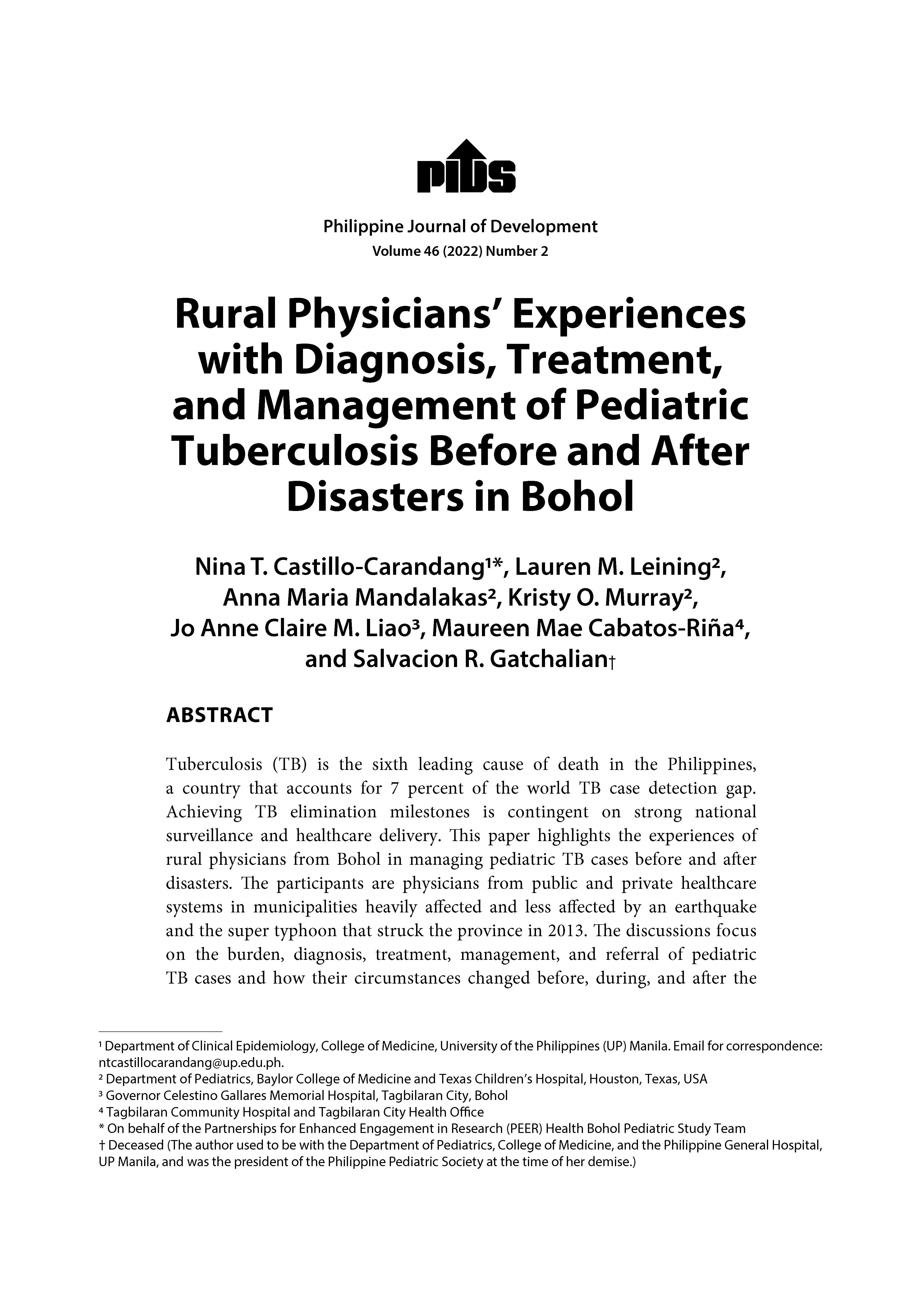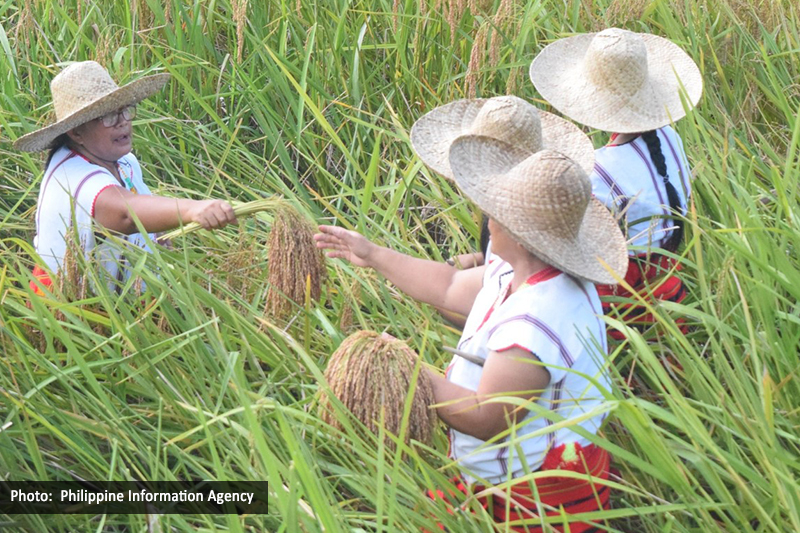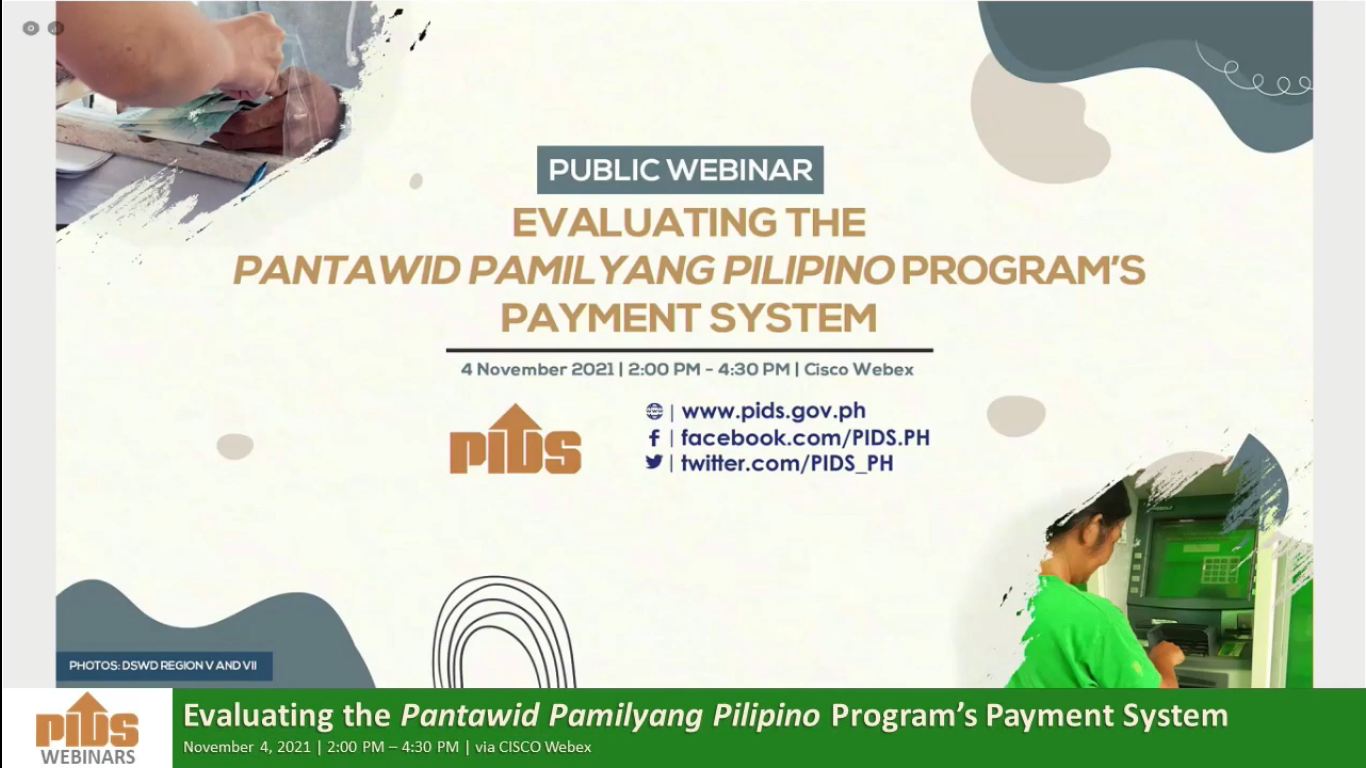In 1995, the Philippines was granted special treatment in rice by the WTO, thereby allowing it to maintain its import monopoly and quantitative restrictions (QRs). This privilege will expire by 2017, hence compelling the rice sector to undergo tariffication. Removal of special treatment will lead to intensified competition from imports and lower domestic prices, reducing farmers’ income. In the following we will assess options for agricultural production support options for rice farmers after tariffication.
TYPES OF AGRICULTURAL SUPPORT SCHEMES
Domestic subsidies are typically provided through productivity-oriented programs, direct payments, or a combination of both. Productivity-oriented programs include research and development (R&D) and irrigation investments. While such programs are important productivity-oriented programs, our assessment focuses on direct payments. The Philippines is already spending considerable amounts for support of rice farmers under its self-sufficiency program, which should be kept in place. However, productivity-oriented programs tend to impact the medium to long-term, whereas the removal of QRs have immediate impacts. Direct payments appear to be the more appropriate safety net for rice farmers. Direct payments are classified into three types namely, traditional support, deficiency payments and decoupled payments.
• Traditional support: examples are price support and procurement schemes. NFA procurement is an example of traditional support.
• Deficiency payments are payments that compensate farmers for when farmgate prices fall. Payments under this type are equal to the difference between a target price and the market price. The US, South Korea, and Thailand have implemented deficiency payment schemes for farmers.
• Decoupled payments refer to lump-sum payments unrelated to price or quantity. Since these payments are a form of assistance to farmers in their transition to a free-market, decoupled payments are capped, and time-bound. The US, Mexico, EU, Turkey, and South Korea, are examples of countries that have implemented decoupled payment schemes. Due to minimal distortion, decoupled payments are permitted without restriction by WTO.
Based on past research, traditional schemes such as the market price support and consumer subsidy are disadvantageous, due to high fiscal burden, leakage, and market distortion. For example, in the Philippines, traditional support has imposed high cost, driving the net debt position of the National Food Authority up to 143 billion pesos. In Thailand, a paddy pledging program cost the government the equivalent of over a trillion pesos, and led to huge stockpiles of rice.
Deficiency payments appear to be a better alternative; when Thailand switched to a Price Insurance Scheme (PIS), it was able to reduce budgetary outlays for farmer support, while still increasing the number of beneficiaries, from 1 to 3.2 million farmers. However, deficiency payments are still vulnerable to high fiscal cost when farmgate prices happen to fall to unexpectedly low levels. On the other hand, decoupled payments address the problem of wastage and high fiscal burden affecting traditional and deficiency payments.
A SCHEME OF DECOUPLED PAYMENTS FOR THE PHILIPPINES
In the following, we evaluate a possible compensatory payment scheme (2017-2022) that would serve as a safety net for rice farmers after tariffication. Rice farmers registered under the Registry System for Basic Sectors in Agriculture (RSBSA), or their heirs, are eligible to receive payments. The annual compensation formula is posited as follows:
Total Payments = P5/kg. x (actual imports -- normal imports) / 0.654
To compute payments for each farmer, total payments from the payment compensation formula shall be divided by the area harvested. This will be distributed per cropping season (twice a year). To avoid fiscal problems, eligible farm area is capped at 2 hectares per farmer. In practice, actual imports and area harvested will be approximated by the previous year’s figures.
To compute expected and normal imports, as well as assess the financial viability of the program, we apply an economic model called the Total Welfare Impact Simulator (TWIST). TWIST will be used to assess two scenarios: baseline scenario and an tariffication scenario. The former assumes QRs are maintained, with a fixed farmgate price of P17 per kg. (NFA support price); the baseline is the basis for the normal rate of imports in the compensation formula. The alternative scenario adopts the same assumptions, except that it posits the repeal of QRs, and imposition of a 35% tariff equivalent (2017 onwards).
Simulation analysis shows that tariffication leads to the following changes relative to the baseline (average of 2017-2022):
• Palay output will be lower by 2.5 million tons per year.
• Farmgate price will be lower by an average of P4.60 pesos per kg.
• Retail price will be lower by an average of P7.00 pesos per kg.
• Imports will be larger by 2.25 million tons per year.
• Tariff revenues will average 27.7 billion per year.
• Based on the assumed compensation formula, payments will equal 17 to 18 billion pesos per year.
Earmarking the rice tariff revenue to pay for the compensation scheme is feasible. Assuming eligible area is at 4 million hectares, payments per hectare is equal to P4,750. In this case, for 2 hectares of irrigated farmland, farmers could receive P19,000 per year. This is greater than transfer per household from the conditional cash transfer program (CCT) which is P15,000 for 3 children. Note that compensatory payments can be received simultaneously with the CCT.
TARIFFICATION INEVITABLE
Tariffication of the Philippine rice sector by 2017 is inevitable. The inevitable transition to a more open rice trade regime should be accompanied by safety nets for smallholders suffering from intensified competition from imports. We have evaluated a compensatory transfer scheme combined with a 35% tariff equivalent as a feasible support scheme once special treatment is removed. Such a compensatory scheme should be implemented alongside existing productivity-enhancing programs for the rice sector.
Roehlano M. Briones and Lovely Ann Tolin are Research Fellow and Research Analyst, respectively, at the Philippine Institute for Development Studies. The study is conducted under the multi-country CREW Project, supported by CUTS International Jaipur.
TYPES OF AGRICULTURAL SUPPORT SCHEMES
Domestic subsidies are typically provided through productivity-oriented programs, direct payments, or a combination of both. Productivity-oriented programs include research and development (R&D) and irrigation investments. While such programs are important productivity-oriented programs, our assessment focuses on direct payments. The Philippines is already spending considerable amounts for support of rice farmers under its self-sufficiency program, which should be kept in place. However, productivity-oriented programs tend to impact the medium to long-term, whereas the removal of QRs have immediate impacts. Direct payments appear to be the more appropriate safety net for rice farmers. Direct payments are classified into three types namely, traditional support, deficiency payments and decoupled payments.
• Traditional support: examples are price support and procurement schemes. NFA procurement is an example of traditional support.
• Deficiency payments are payments that compensate farmers for when farmgate prices fall. Payments under this type are equal to the difference between a target price and the market price. The US, South Korea, and Thailand have implemented deficiency payment schemes for farmers.
• Decoupled payments refer to lump-sum payments unrelated to price or quantity. Since these payments are a form of assistance to farmers in their transition to a free-market, decoupled payments are capped, and time-bound. The US, Mexico, EU, Turkey, and South Korea, are examples of countries that have implemented decoupled payment schemes. Due to minimal distortion, decoupled payments are permitted without restriction by WTO.
Based on past research, traditional schemes such as the market price support and consumer subsidy are disadvantageous, due to high fiscal burden, leakage, and market distortion. For example, in the Philippines, traditional support has imposed high cost, driving the net debt position of the National Food Authority up to 143 billion pesos. In Thailand, a paddy pledging program cost the government the equivalent of over a trillion pesos, and led to huge stockpiles of rice.
Deficiency payments appear to be a better alternative; when Thailand switched to a Price Insurance Scheme (PIS), it was able to reduce budgetary outlays for farmer support, while still increasing the number of beneficiaries, from 1 to 3.2 million farmers. However, deficiency payments are still vulnerable to high fiscal cost when farmgate prices happen to fall to unexpectedly low levels. On the other hand, decoupled payments address the problem of wastage and high fiscal burden affecting traditional and deficiency payments.
A SCHEME OF DECOUPLED PAYMENTS FOR THE PHILIPPINES
In the following, we evaluate a possible compensatory payment scheme (2017-2022) that would serve as a safety net for rice farmers after tariffication. Rice farmers registered under the Registry System for Basic Sectors in Agriculture (RSBSA), or their heirs, are eligible to receive payments. The annual compensation formula is posited as follows:
Total Payments = P5/kg. x (actual imports -- normal imports) / 0.654
To compute payments for each farmer, total payments from the payment compensation formula shall be divided by the area harvested. This will be distributed per cropping season (twice a year). To avoid fiscal problems, eligible farm area is capped at 2 hectares per farmer. In practice, actual imports and area harvested will be approximated by the previous year’s figures.
To compute expected and normal imports, as well as assess the financial viability of the program, we apply an economic model called the Total Welfare Impact Simulator (TWIST). TWIST will be used to assess two scenarios: baseline scenario and an tariffication scenario. The former assumes QRs are maintained, with a fixed farmgate price of P17 per kg. (NFA support price); the baseline is the basis for the normal rate of imports in the compensation formula. The alternative scenario adopts the same assumptions, except that it posits the repeal of QRs, and imposition of a 35% tariff equivalent (2017 onwards).
Simulation analysis shows that tariffication leads to the following changes relative to the baseline (average of 2017-2022):
• Palay output will be lower by 2.5 million tons per year.
• Farmgate price will be lower by an average of P4.60 pesos per kg.
• Retail price will be lower by an average of P7.00 pesos per kg.
• Imports will be larger by 2.25 million tons per year.
• Tariff revenues will average 27.7 billion per year.
• Based on the assumed compensation formula, payments will equal 17 to 18 billion pesos per year.
Earmarking the rice tariff revenue to pay for the compensation scheme is feasible. Assuming eligible area is at 4 million hectares, payments per hectare is equal to P4,750. In this case, for 2 hectares of irrigated farmland, farmers could receive P19,000 per year. This is greater than transfer per household from the conditional cash transfer program (CCT) which is P15,000 for 3 children. Note that compensatory payments can be received simultaneously with the CCT.
TARIFFICATION INEVITABLE
Tariffication of the Philippine rice sector by 2017 is inevitable. The inevitable transition to a more open rice trade regime should be accompanied by safety nets for smallholders suffering from intensified competition from imports. We have evaluated a compensatory transfer scheme combined with a 35% tariff equivalent as a feasible support scheme once special treatment is removed. Such a compensatory scheme should be implemented alongside existing productivity-enhancing programs for the rice sector.
Roehlano M. Briones and Lovely Ann Tolin are Research Fellow and Research Analyst, respectively, at the Philippine Institute for Development Studies. The study is conducted under the multi-country CREW Project, supported by CUTS International Jaipur.












